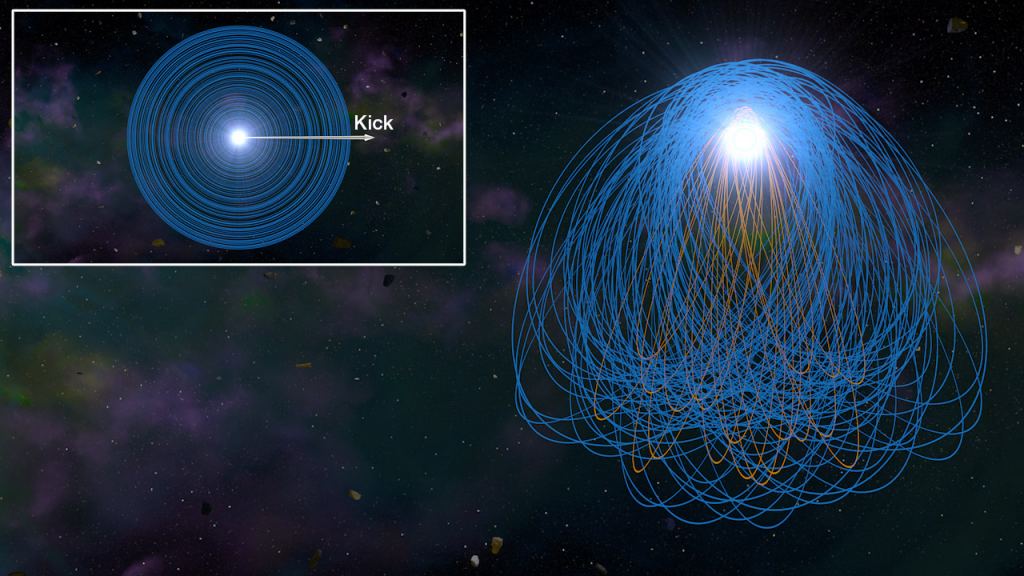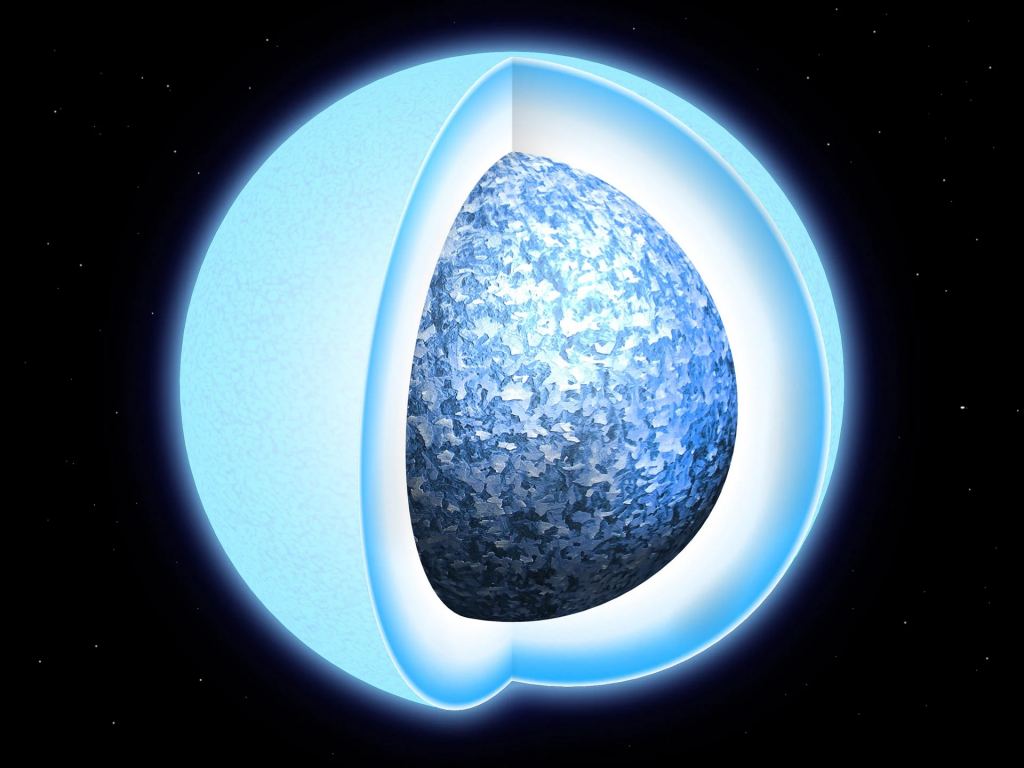When stars exhaust their hydrogen fuel at the end of their main sequence phase, they undergo core collapse and shed their outer layers in a supernova. Whereas particularly massive stars will collapse and become black holes, stars comparable to our Sun become stellar remnants known as "white dwarfs." These "dead stars" are extremely compact and dense, having mass comparable to a star but concentrated in a volume about the size of a planet. Despite being prevalent in our galaxy, the chemical makeup of these stellar remnants has puzzled astronomers for years.
For instance, white dwarfs consume nearby objects like comets and planetesimals, causing them to become "polluted" by trace metals and other elements. While this process is not yet well understood, it could be the key to unraveling the metal content and composition (aka. metallicity) of white dwarf stars, potentially leading to discoveries about their dynamics. In a recent paper, a team from the University of Colorado Boulder theorized that the reason white dwarf stars consume neighboring planetesimals could have to do with their formation.
The research team consisted of Tatsuya Akiba, a Ph.D. candidate at UC Boulder with the Joint Institute for Laboratory Astrophysics (JILA) at UC Boulder. He was joined by Selah McIntyre, an undergraduate student in the Department of Chemistry, and Ann-Marie Madigan, a JILA Fellow and a professor in the Department of Astrophysical and Planetary Sciences. Their research was reported in a paper titled " Tidal Disruption of Planetesimals from an Eccentric Debris Disk Following a White Dwarf Natal Kick," which recently appeared in The Astrophysical Journal.
Despite their prevalence in our galaxy, the chemical makeup of white dwarfs has puzzled astronomers for years. The presence of heavy metal elements like silicon, magnesium, and calcium on the surfaces of many of these stellar remnants defies what astronomers consider conventional stellar behavior. "We know that if these heavy metals are present on the surface of the white dwarf, the white dwarf is dense enough that these heavy metals should very quickly sink toward the core," said Akiba in a recent JILA press release. "So, you shouldn't see any metals on the surface of a white dwarf unless the white dwarf is actively eating something."
Madigan's research group at JILA focuses on the gravitational dynamics of white dwarfs and how these affect surrounding material. For their study, the team created computer models that simulated a white dwarf experiencing a rare phenomenon known to occur during its formation. This consisted of an asymmetric mass loss caused by a "natal kick" that altered its motion and the dynamics of the surrounding material. As Professor Madigan explained:
"Simulations help us understand the dynamics of different astrophysical objects. So, in this simulation, we throw a bunch of asteroids and comets around the white dwarf, which is significantly bigger, and see how the simulation evolves and which of these asteroids and comets the white dwarf eats. Other studies have suggested that asteroids and comets, the small bodies, might not be the only source of metal pollution on the white dwarf's surface. So, the white dwarfs might eat something bigger, like a planet."
In 80% of their test runs, the team observed that the orbits of comets and planetesimals within 30 to 240 AU (the distance between the Sun and Neptune and well into the Kuiper Belt) of the star became elongated and aligned. They also found that in about 40% of their simulations, the consumed planetesimals came from retrograde orbits. Lastly, they extended their simulations to 100 million years after formation and found that these planetesimals still had elongated orbits and moved as one coherent unit.
These new findings also shed light on the origin, chemistry, and future evolution of stars, including our Solar System. In about 5 billion years, our Sun will exit its main sequence phase and grow to become a Red Giant. Roughly 2 billion years later, it will blow off its outer layers in a supernova, leaving behind a white dwarf remnant. Looking ahead, the researchers hope to take their simulations to greater scales to examine how white dwarfs interact with larger planets. These simulations could reveal what will become of the outer planets in our Solar System once our Sun is in its "dead" phase. Said Madigan:
"This is something I think is unique about our theory: we can explain why the accretion events are so long-lasting. While other mechanisms may explain an original accretion event, our simulations with the kick show why it still happens hundreds of millions of years later. The vast majority of planets in the universe will end up orbiting a white dwarf. It could be that 50% of these systems get eaten by their star, including our own solar system. Now, we have a mechanism to explain why this would happen."
Further Reading: JILA, AJL
 Universe Today
Universe Today


